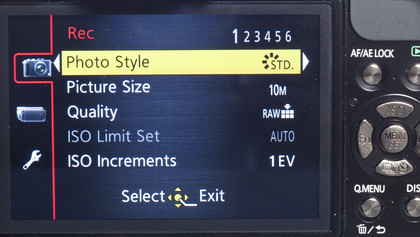Why you can trust TechRadar
Now that we have had a chance to use a full production version of the Panasonic LX7, we have continued to be impressed by the camera.

Many will be disappointed by Panasonic's decision to stick with the same sensor as in the LX5, instead of opting for a larger device such as the one found in the Sony RX100.

However, Panasonic is keen to point out that what the camera lacks in sensor size, it gains in wide aperture. That is to say that at the telephoto end of the lens focal length, the Panasonic LX7 can still maintain f/2.3, compared with the Sony RX100's f/4.9.

Even in low light conditions, the camera is capable of producing high quality images with a good amount of noise control. Despite the fact that it has a smaller sensor, an impressive amount of detail is still captured.

It's also capable of producing pleasing restricted depth of field effects, thanks in part to that f/1.4 aperture. At the moment, the lens is the joint brightest on the market, tied only with the recently announced Samsung EX2.

Colours are generally represented very well, being bright and punchy but not over the top. Automatic white balance generally does a good job of producing accurate colours, but we did find a couple of occasions where the camera produced slightly cooler than desired images.

But switching to a more specific white balance option, such as daylight, is quick and easy, and is recommended if the camera is struggling with mixed lighting conditions.
Sign up for breaking news, reviews, opinion, top tech deals, and more.

Overall, the camera's matrix metering does a good job of assessing the lighting conditions to produce an accurately exposed image. This is true even in relatively mixed lighting. Again, switching to spot or centre metering is easy.

Panasonic's G series of cameras have class-leading autofocus speeds, so it's no surprise to see that the Panasonic LX7 is also capable of speedy responses. Focusing is quick and accurate in the majority of cases, locking onto subjects with ease.

Macro focusing, which can be activated via a switch on the lens itself, is also good, outperforming the Sony RX100 in terms of images that can be captured from close distances.

Panasonic, along with Olympus, has long been a fan of digital filters. Here on the Panasonic LX7 we see the best choice yet for the premium compact camera range. Several filters, including Expressive, Retro, Dynamic Monochrome and Toy Effect, are available.

While it's true to say that some will be appreciated more than others, some are definitely worth a look. Dynamic Monochrome, for instance, is really effective, while Cross Process gives a good level of customisation that should help it appeal even more.

Perhaps the best news about these digital filters is that they can be shot in raw and JPEG format, so, if you decide you'd rather the picture didn't have the filter after all, you've got the option to remove it in post-production.

It's a shame that the filters can't be activated while shooting in P/A/S/M modes, though, since this would have given greater control over parameters such as shutter speed and aperture. Instead, they need to be activated via a dedicated mode, which can be found on the mode dial.

The LCD screen performs extremely well, providing a good angle of view and remaining visible in all but the very brightest of sunlight. There's no viewfinder included as standard, but, unlike the Sony RX100, there is the option to add one via the hotshoe on the top of the camera.

Current page: Performance
Prev Page Build quality and handling Next Page Image quality and resolution
Amy has been writing about cameras, photography and associated tech since 2009. Amy was once part of the photography testing team for Future Publishing working across TechRadar, Digital Camera, PhotoPlus, N Photo and Photography Week. For her photography, she has won awards and has been exhibited. She often partakes in unusual projects - including one intense year where she used a different camera every single day. Amy is currently the Features Editor at Amateur Photographer magazine, and in her increasingly little spare time works across a number of high-profile publications including Wired, Stuff, Digital Camera World, Expert Reviews, and just a little off-tangent, PetsRadar.
